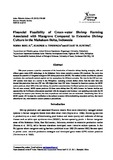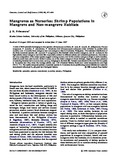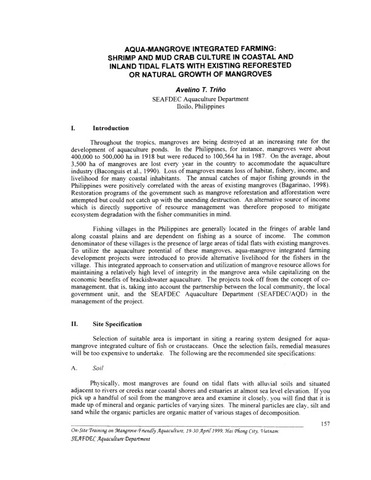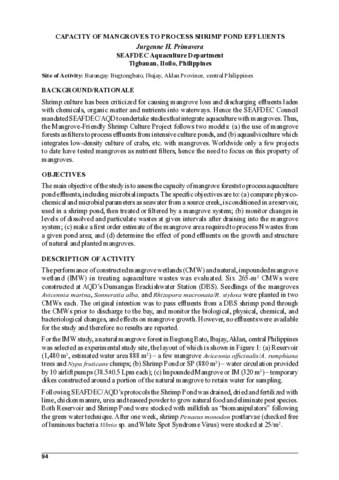Financial feasibility of green-water shrimp farming associated with mangrove compared to extensive shrimp culture in the Mahakam Delta, Indonesia
- Global styles
- MLA
- Vancouver
- Elsevier - Harvard
- APA
- Help
Share
Abstract
This paper presents a post-hoc assessment of the introduction of intensive shrimp farming strategies, with and without green-water (GW) technology, in the Mahakam Delta where extensive systems (ES) dominate. The study also assesses the potential of integrated mangrove GW shrimp production (MGW). The method section describes the systems considered, the cost-benefit analysis applied and the assumptions for different scenarios. The data for the GW and non-GW systems were based on a survey in the Philippines. Assessing cultured shrimp yields from the total farm area showed that production from non-GW was 10% higher than from GW farms. Compared to these two systems, the MGW system produces about 20% of the total shrimp, but provides complementary livelihood options and ecosystem services. Per unit area covered, MGW system produces 20 times more shrimp than ES, while income for farmers doubles and opportunities for livelihoods enhancement associated with the mangrove area increase. Low operating costs make the ES interesting for resource poor farmers, but risks to producers and societal cost are underrated. Transferring from ES to MGW system will increase the contribution to the national economy whilst maintaining ecosystem services, that would otherwise be lost, were intensive culture systems to predominate.
Description
Paper presented at the 9th Asian Fisheries and Aquaculture Forum April 21-25, 2011, Shanghai, China
Suggested Citation
Bosma, R. H., Tendencia, E., & Bunting, S. W. (2012). Financial feasibility of green-water shrimp farming associated with mangrove compared to extensive shrimp culture in the Mahakam Delta, Indonesia. Asian Fisheries Science , 25(3), 258-269. http://hdl.handle.net/10862/2170
Type
ArticleISSN
0116-6514Koleksi
- Journal Articles [1247]
Related items
Showing items related by title, author, creator and subject.
-
Mangroves as nurseries: Shrimp populations in mangrove and non-mangrove habitats
Primavera, J. H. (Elsevier, 1998)A total of 4845 penaeids belonging to nine species—Metapenaeus anchistus, M. ensis, M. moyebi, M. philippinensis, Penaeus merguiensis, P. monodon, P. semisulcatus, P. latisulcatus and Metapenaeopsis palmensis—were collected ...111111 Total citations7 Recent citationsn/a Field Citation Ration/a Relative Citation Ratio
-
Aqua-mangrove integrated farming: Shrimp and mud crab culture in coastal and inland tidal flats with existing reforested or natural growth of mangroves
Triño, Avelino T. (Aquaculture Department, Southeast Asian Fisheries Development Center, 2000)Throughout the tropics, mangroves are being destroyed at an increasing rate for the development of aquaculture ponds. In the Philippines, for instance, mangroves were about 400,000 to 500,000 ha in 1918 but were reduced ... -
Capacity of mangroves to process shrimp pond effluents.
Shrimp culture has been criticized for causing mangrove loss and discharging effluents laden with chemicals, organic matter and nutrients into waterways. Hence the SEAFDEC Council mandated SEAFDEC/AQD to undertake studies ...






